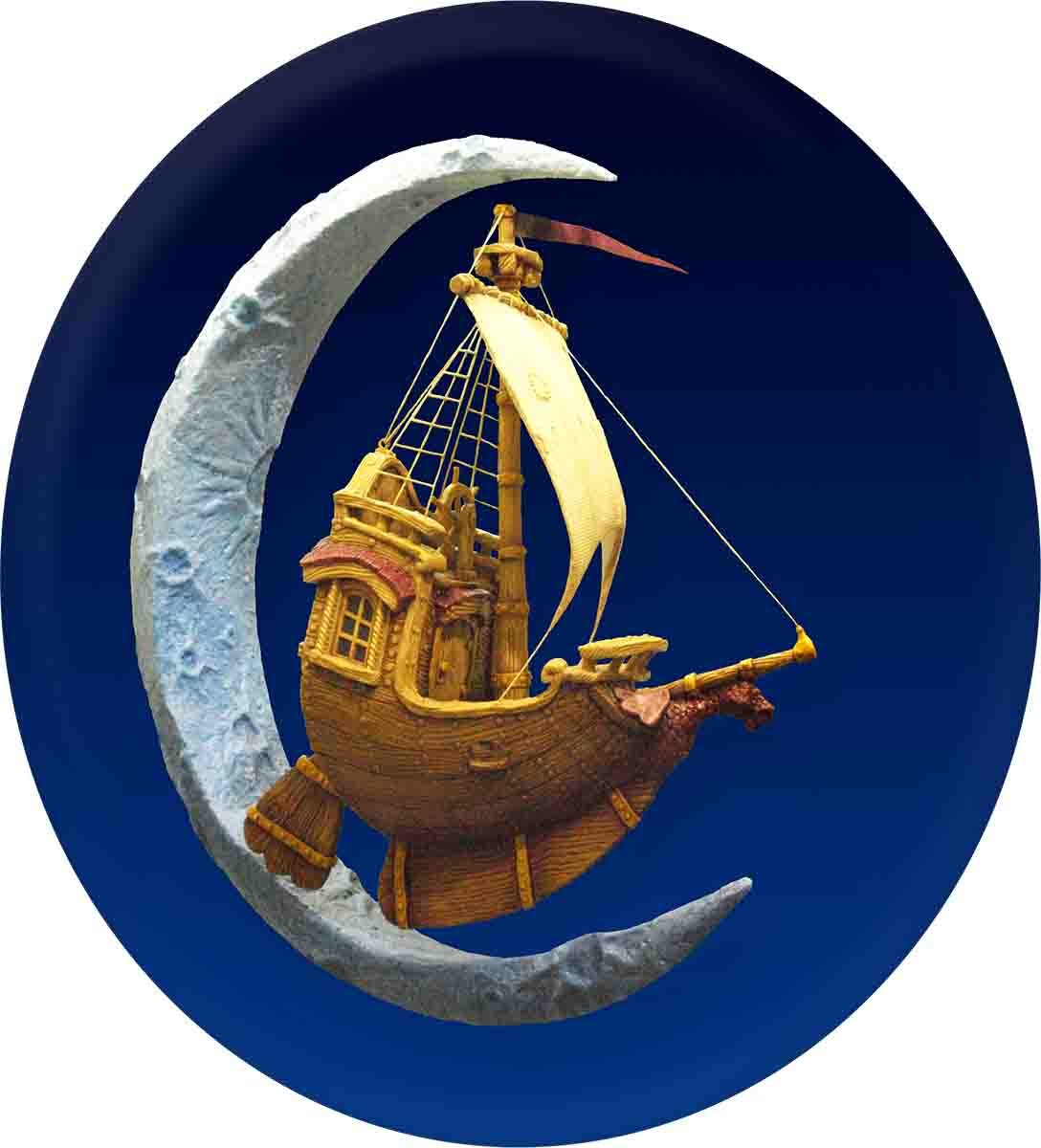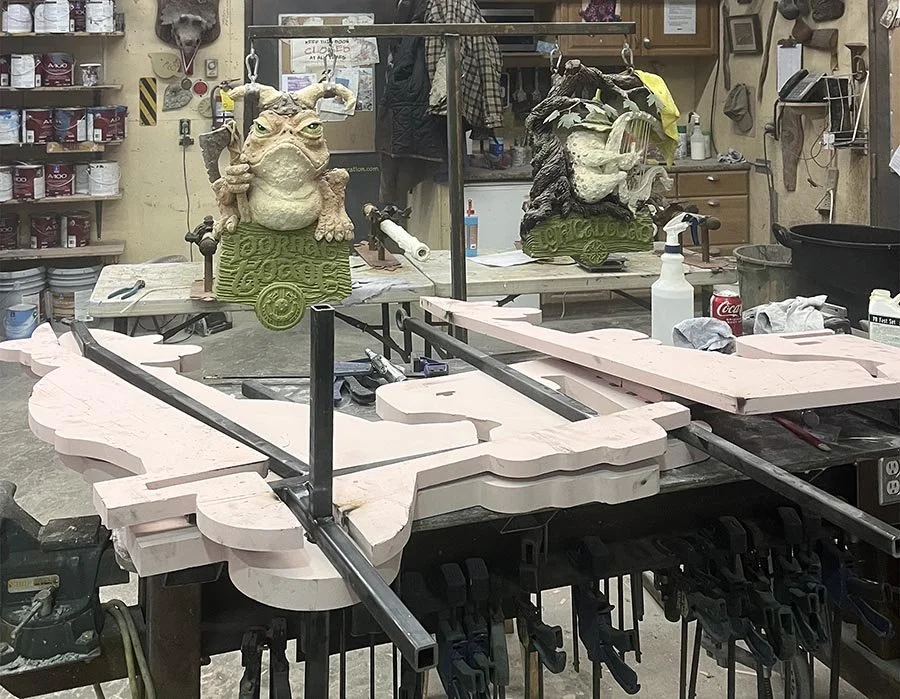It was a productive day of fitting, assembling and die grinding pieces of the tractor. By the end of the day, the tractor was welded to the base. With the carving mostly finished, we will begin the sculpting and preliminary painting before final assembly begins. While I fully understood the size of the tractor as I designed and routed it, the feature is definitely very large as the layers come together. The little tractor is going to look fabulous sitting on top of a nine-foot-tall plinth in the center of a stone planter. When it is done, this is going to be a very fun three-dimensional version of the Downey’s Farm logo. Stay tuned…
More than just a pretty face
There’s much more to our signs than just a pretty face. Precision Board HDU and sculpting epoxy are awesome materials, but they don’t offer much structural strength. Our signs often need to travel thousands of miles and need to be handled with cranes. They also need to withstand decades of wind and weather. That means we have to design, fabricate and embed structural steel inside the fancy features we create. This requires careful planning. In the case of the little tractor we are creating for Downey’s Farm, it means we will have to assemble it in stages, finishing it as we go, as many parts will not be accessible after they are all together. Today’s task was to weld the steel frame and glue up the first three layers around it. Tomorrow we’ll weld it to a 1/4” thick base plate and then begin the first of the sculpting and painting. Stay tuned…
Building a giant duck
We designed and built a large sign for a water park almost two decades ago. The sign base was a giant, twenty-foot-tall wave with a rubber duck surfing on top. A huge sign was suspended on the front of the wave. We did as much as possible in our studio, which went smoothly. Then came the onsite assembly, which was a relatively new experience for us at the time. The sign had a prefabricated steel tripod structure, which was lifted off the semi-trailer and tipped into position easily. The sign face installation also went smoothly. The colourful tube and body of the duck were much trickier to install as a crew member had to climb inside to position the piece and tighten up the giant bolts.
Then came the hardest part - putting on the duck’s head. It was a matter of guiding the head’s structure to slip inside the top of the body. I remember gingerly climbing up the very tall ladder, rigging a safety rope around the duck and then wedging myself between the feet and body and doing my best to direct the crane operator and physically coax the head into position. Then came the most terrifying part of the job… unhooking the crane and twisting out the eye bolt. I remember shaking badly as it was below freezing with a stiff breeze, but I was also the most scared I had ever been on a job. Thankfully, I survived without mishap and was delighted to finish and climb down. With winter and freezing temperatures on us, we had to wait until spring to finish sculpting the base wave. It turned out fabulous!
The giant duck sign is still in place to this day. That project taught us many things, and these days we would do things very differently with better equipment and more safety protocols.




